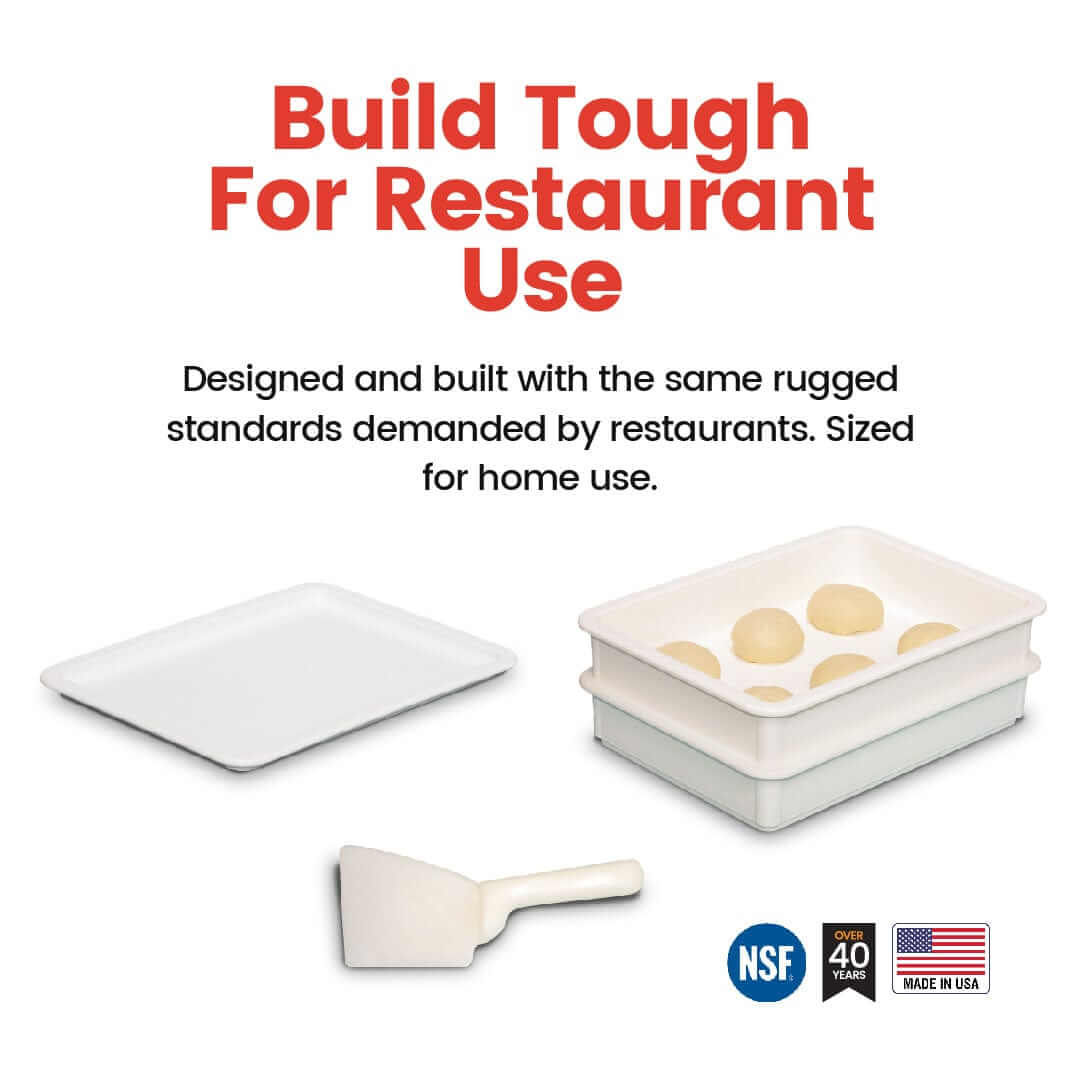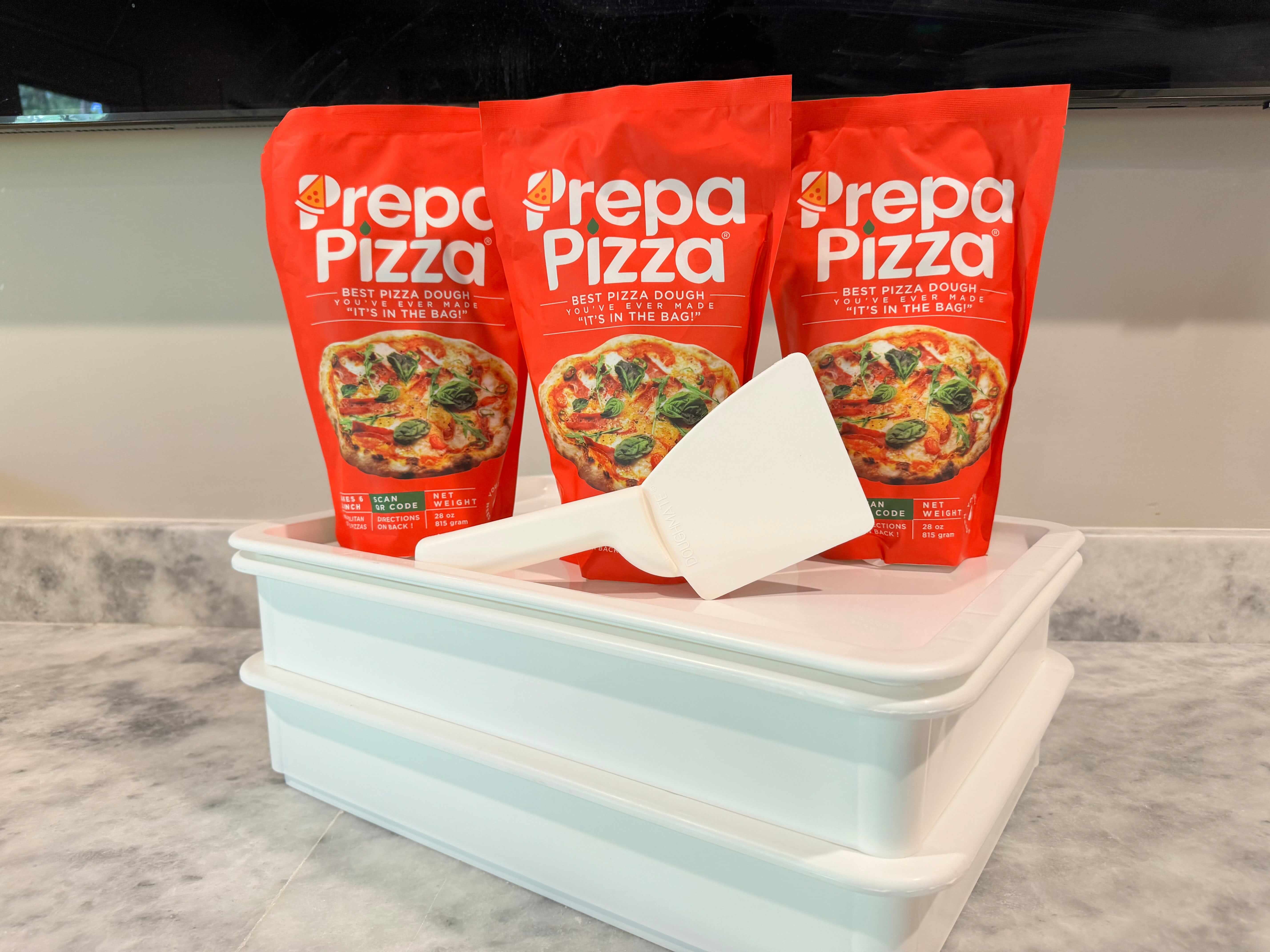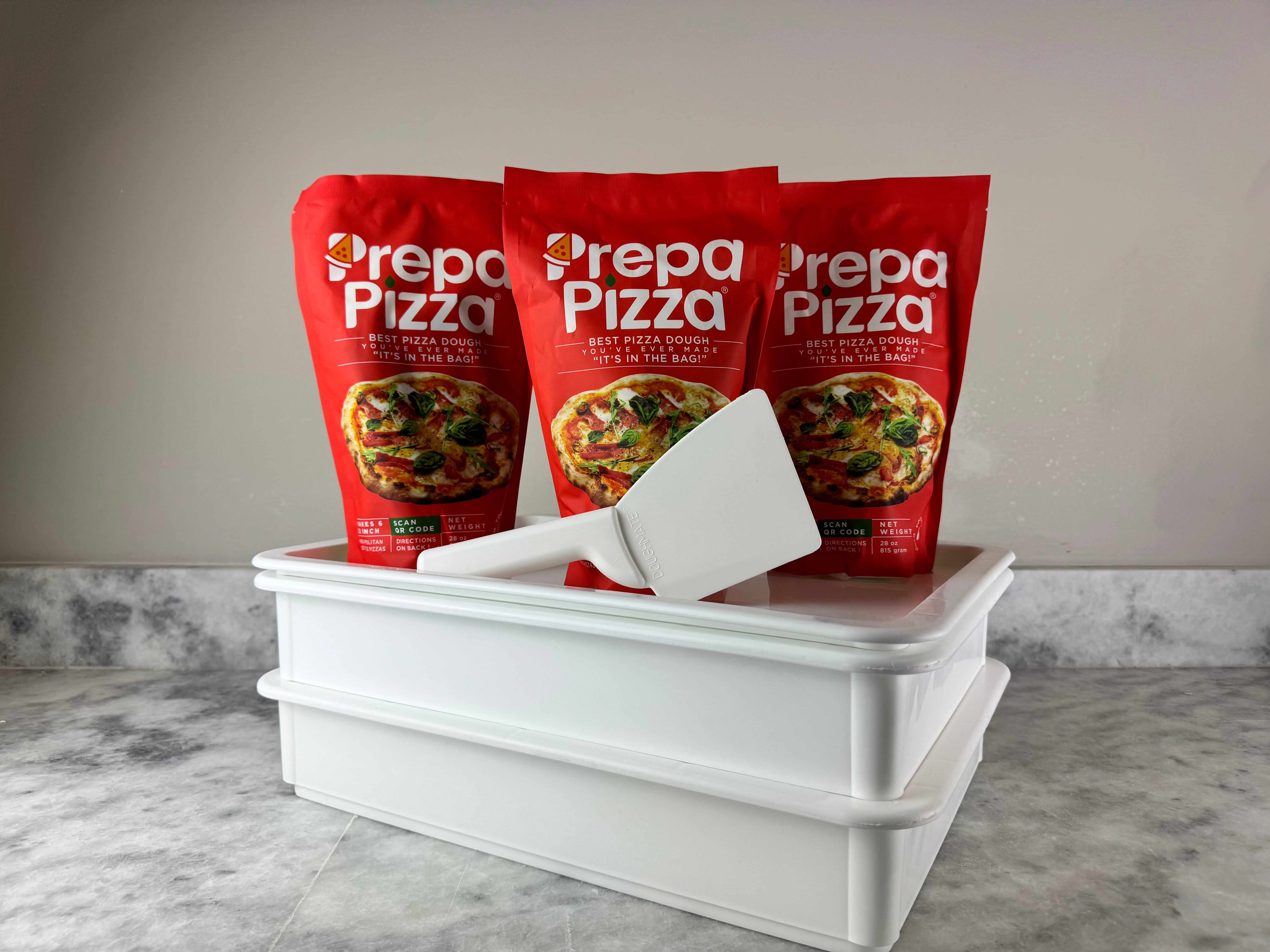
Pizzeria Style Dough: The Secret to Perfect Pizza Crust
When it comes to making the perfect pizzeria-style pizza, the foundation lies in the dough. Using high-quality pizza dough is essential for achieving that authentic, crispy crust that is the hallmark of a great pie. With Prepa Pizza's premade dough, you can recreate that classic experience at home with ease. Our dough is crafted from premium ingredients to ensure that every bite is reminiscent of your favorite pizzeria.
Creating delicious pizzeria-style pizza involves more than just toppings; the right dough elevates the entire dish. The beauty of Prepa Pizza’s premade dough is that it saves you time while still delivering a restaurant-quality result. You can find our dough available here, ready for you to roll out and make your culinary creations come to life.
Whether you prefer a classic Margherita or a loaded supreme, pizzeria-style pizza starts with the right base. Discover the secrets to achieving that perfect crust while learning tips and tricks that will impress your family and friends. Get ready to enjoy pizza night like never before!
Essential Ingredients for Pizzeria Style Dough
Creating authentic pizzeria-style dough involves a careful selection of ingredients that impact texture, flavor, and overall quality. Using premium materials, like those found in Prepa Pizza's premade dough, ensures a superior base for your pizza creations. Explore the essential components that contribute to an exceptional dough experience.
Types of Flour and Their Impact
The choice of flour is crucial in pizzeria-style dough. Generally, high-protein flours yield better gluten development, which is essential for a chewy crust.
| Flour Type | Protein Content | Characteristics |
|---|---|---|
| Bread Flour | 12-14% | Strong gluten, great for texture |
| All-Purpose Flour | 10-12% | Versatile, suitable but less chewy |
| Italian 00 Flour | 11-12.5% | Fine texture, ideal for Neapolitan pizza |
| Semolina Flour | 12-14% | Coarse texture, enhances flavor |
Using Caputo tipo 00 flour gives a silky feel that results in a light, airy crust, making it a top choice for authentic pizza. If you're looking for a blend, mixing bread flour with a lower-protein option can achieve a balanced texture.
Yeast Varieties and Their Roles
Yeast is the leavening agent that allows your dough to rise and develop flavor. There are different types of yeast you can use:
- Active Dry Yeast: Requires proofing in warm water before use.
- Instant Yeast: Can be mixed directly into dry ingredients, offering convenience.
- Sourdough Starter: Provides a unique flavor profile and texture.
When making your dough, consider the flavor development attributed to longer fermentation periods. Using less yeast and allowing for longer rises, as Prepa Pizza does, creates a more complex taste in the dough.
Hydration, Water, and Salt
Water plays a vital role in dough development. The hydration level determines the dough's elasticity and structure. Higher hydration levels can lead to a more open crumb, while lower levels result in a denser texture.
A rule of thumb is to use about 60-65% hydration for pizzeria-style dough. This means for every 1 kg of flour, you would use 600-650 grams of water.
Salt is equally important. Not only does it enhance flavor, but it also strengthens gluten and helps control yeast activity. Incorporating around 1.5-2% salt based on the total flour weight is a common practice. Additionally, a splash of olive oil can further improve the dough's texture and give it a rich flavor.
Additional Ingredients for Texture and Flavor
While flour, yeast, water, and salt are the foundational ingredients, other elements can enhance your dough. Cornmeal can be used on the pizza peel to prevent sticking and adds a subtle crunch.
You might also experiment with sugar, which helps in browning the crust, and can improve fermentation speed when using yeast. For an elevated flavor, consider incorporating herbs or spices into your dough. By using these ingredients wisely, you’ll achieve an authentic and delicious pizzeria-style pizza experience.
For convenience, you can try Prepa Pizza’s premade dough, which combines these expert-selected ingredients for consistent quality. Visit Prepa Pizza's dough page for more information on how to get started with authentic pizza making at home.
Step-By-Step Guide to Making Pizzeria Style Dough
Creating pizzeria style dough at home involves precise techniques that will elevate your homemade pizza experience. From the initial mixing of ingredients to perfecting the fermentation process, following these guidelines will help you achieve an authentic crust.
Preparing and Mixing the Dough
Start by gathering the essential ingredients for your dough: flour, water, yeast, and salt. If you prefer a hassle-free option, consider using Prepa Pizza's premade dough, which simplifies the process without sacrificing quality.
To mix the dough, combine warm water, yeast, and a pinch of sugar. Let it sit for about 5 minutes to activate. In a large bowl or food processor, mix the flour and salt. Once the yeast mixture is ready, add it to the flour. Ensure everything is well combined before moving on.
Kneading and Developing Gluten Structure
Kneading is crucial for developing gluten structure, which gives your dough elasticity. If you're using a stand mixer, attach the dough hook and knead on low speed for approximately 5-10 minutes. This process allows the dough to become smooth and elastic.
For hand kneading, transfer the dough to a floured surface. Push the dough with the heel of your hand, fold it, and rotate it. Repeat this for about 8-10 minutes. Proper kneading may require a bit of effort, but it lays the foundation for a chewy and airy crust that is characteristic of pizzeria style dough.
Fermentation and Proofing Techniques
Fermentation is the next vital step. Once kneaded, place your dough in a greased bowl and cover it with a damp cloth or plastic wrap. Allow it to rise in a warm environment for 1-2 hours or until doubled in size. This process enhances flavor and texture.
After the first rise, punch down the dough to release air bubbles. Divide it into dough balls, which can be shaped into pizzas. For an even better result, let the dough balls rest for another 30 minutes. This final proofing stage relaxes the gluten, making the dough easier to roll out with a rolling pin and resulting in a crispier crust when baked.
Shaping, Baking, and Finishing Pizzeria Style Dough
Creating the perfect pizzeria-style pizza involves careful attention to shaping, baking, and finishing techniques. Utilizing quality ingredients, like Prepa Pizza's premade dough, can enhance your pizza-making experience, providing a base that rivals restaurant standards. You can find the premade dough here.
Forming the Perfect Pizza Crust
Start with the dough at room temperature. Lightly dust your work surface with flour or cornmeal to prevent sticking. Divide the dough into portions for your pizzas. Gently press each piece into a round disc, using your fingers to stretch it outward while maintaining the edges slightly thicker for a crispy crust.
For an evenly shaped pizza, use a combination of your hands and a rolling pin, if necessary. Aim for a thickness of about ¼ inch for a thin crust. Remember, the dough should feel elastic and smooth. Let the formed crust rest for about 10-15 minutes, allowing the gluten to relax. This step reduces shrinkage during baking.
Baking Methods and Tools
Baking is a critical step in achieving that perfect pizza. Preheat your oven to the highest temperature, ideally around 500°F (260°C). A pizza stone or steel can significantly improve heat retention and help create a crispy crust. Place the stone in the oven before preheating to ensure it’s thoroughly heated.
Transfer your pizza onto the hot stone using a pizza peel. Bake for 8-12 minutes, monitoring closely. Adjust the time based on the thickness of your crust and the toppings. When the crust is golden brown and the cheese is bubbling, your pizza is ready for finishing touches.
Homemade Pizza and Pizza Night Tips
To make your pizza night special, prepare all toppings in advance. Use fresh ingredients for superior flavor. Set up a DIY station for friends and family to create their own pizzas, enhancing the experience.
When it’s time to finish your pizza, consider adding fresh basil, a drizzle of olive oil, or a sprinkle of Parmesan cheese. These additions can elevate the dish. For a crispy crust, let the pizza cool for a couple of minutes before slicing. This allows the cheese to set, making serving easier. Enjoy your homemade pizzeria-style pizza with friends and family!
Popular Styles and Variations Using Pizzeria Style Dough
Pizzeria style dough forms the foundation for an array of delicious pizza varieties. With Prepa Pizza's premade dough, you can effortlessly create authentic dishes that showcase both traditional and innovative approaches. Explore the distinct styles and variations available using this versatile dough.
Classic Pizza Varieties
When it comes to classic pizzas, the Neapolitan and New York styles stand out. Neapolitan pizza features a thin, charred crust topped with fresh tomato sauce, mozzarella cheese, and fresh basil. It cooks quickly in a high-temperature oven, resulting in a soft, airy crust.
In contrast, New York-style pizza boasts a larger, foldable slice with a chewier texture. It's perfect for street food, typically topped with pizza sauce and a generous layer of mozzarella. The Sicilian style adds to the diversity with its thicker, rectangular pieces, often loaded with toppings for a hearty meal.
Calzone and Folded Pizza Creations
Calzones offer a delightful twist on traditional pizza. These folded delights are packed with your favorite toppings, such as ricotta, mozzarella, and fresh basil, all sealed within a golden crust. When baked, they develop a crispy exterior that gives way to a melty interior.
You can enjoy calzones with a side of pizza sauce for dipping. Variations can include additional ingredients like spinach or meats, making them adaptable for different tastes. This flexibility is ideal for personalizing your dish with Prepa Pizza's dough.
Alternative Styles: White and Pan Pizza
White pizza is a unique alternative, omitting tomato sauce in favor of a base made with ricotta or mozzarella. Topped with fresh basil and garlic, it offers a rich, creamy flavor that's a favorite among many. You can get creative by adding other ingredients, such as spinach or artichokes.
Pan pizza, characterized by its thick, fluffy crust, is baked in a deep dish, creating a delightful crunch. This style often features generous amounts of pizza sauce layered on top of the cheese and toppings, providing a hearty bite. Each slice is satisfying and perfect for sharing, making it a popular choice for gatherings.
With Prepa Pizza's premade dough, you can explore these styles at home, ensuring a delicious pizza experience.
Frequently Asked Questions
When making pizzeria-style pizza dough, understanding the essential ingredients and techniques is crucial. You will find insights into different styles of pizza dough, easy recipes, and tips for achieving the ideal texture in your dough.
What ingredients are essential for making authentic pizzeria-style pizza dough?
To create authentic pizzeria-style pizza dough, you should use high-quality ingredients. Essential components include flour (preferably high-gluten), water, salt, sugar, and yeast. Prepa Pizza offers premade dough that contains these premium ingredients, ensuring a restaurant-quality product.
How does New York style pizza dough differ from traditional Italian pizza dough?
New York style pizza dough is typically formulated to be chewier and more robust than traditional Italian dough. It often has a higher water content and may include a bit of oil in the dough for added richness. The cooking method, using high-temperature pizza ovens, also contributes to the unique texture of New York style pizza.
Can you provide an easy-to-follow recipe for creating pizzeria-style pizza dough at home?
For a straightforward pizzeria-style dough recipe:
- Combine 4 cups of high-gluten flour, 1 ½ cups of warm water, 1 packet of yeast, 2 teaspoons of sugar, and 2 teaspoons of salt.
- Knead until smooth, then let it rise for 1-2 hours.
- Alternatively, use Prepa Pizza’s premade dough for a hassle-free option. You can find it here.
What are the key steps to achieving the perfect texture in pizzeria-style pizza dough?
To achieve the perfect texture:
- Use high-gluten flour for strength and elasticity.
- Knead the dough thoroughly to develop gluten.
- Allow for ample rising time to enhance flavor and texture.
- Properly shape your dough for an even distribution of air.
How can you make a quick New York style pizza dough without compromising quality?
For a quick version of New York style pizza dough, reduce the rising time by using warm water (about 110°F) to activate the yeast faster. You can mix the ingredients, knead, and let it rest for about 30 minutes. Using Prepa Pizza's premade dough saves time while still delivering quality.
What is the importance of yeast in pizzeria-style pizza dough, and how does it affect the final product?
Yeast is crucial for fermentation, which produces gas and causes the dough to rise. It enhances the flavor and texture of the dough. The fermentation process allows for the development of the dough's structure, contributing to that characteristic chewiness in the final pizza.






























